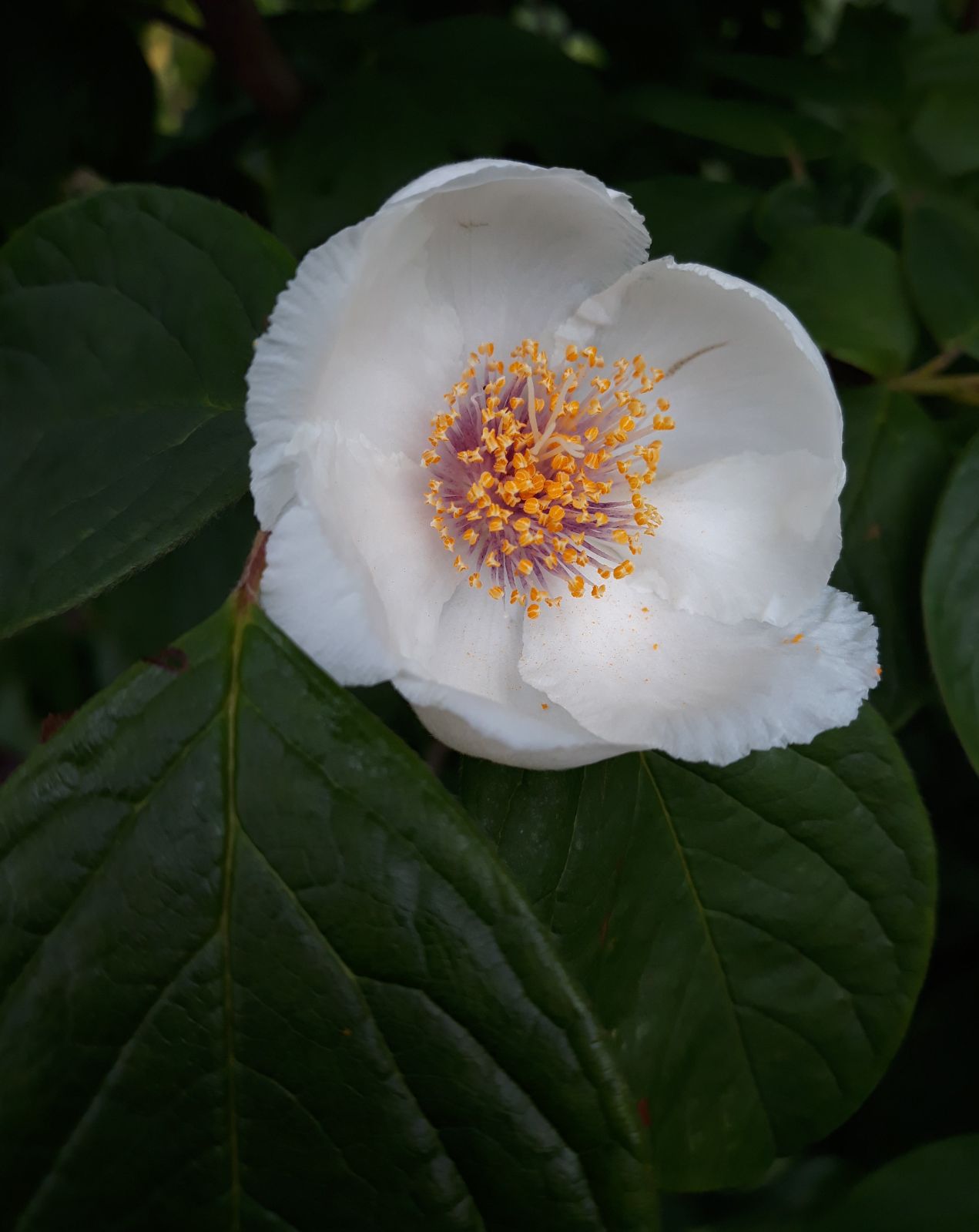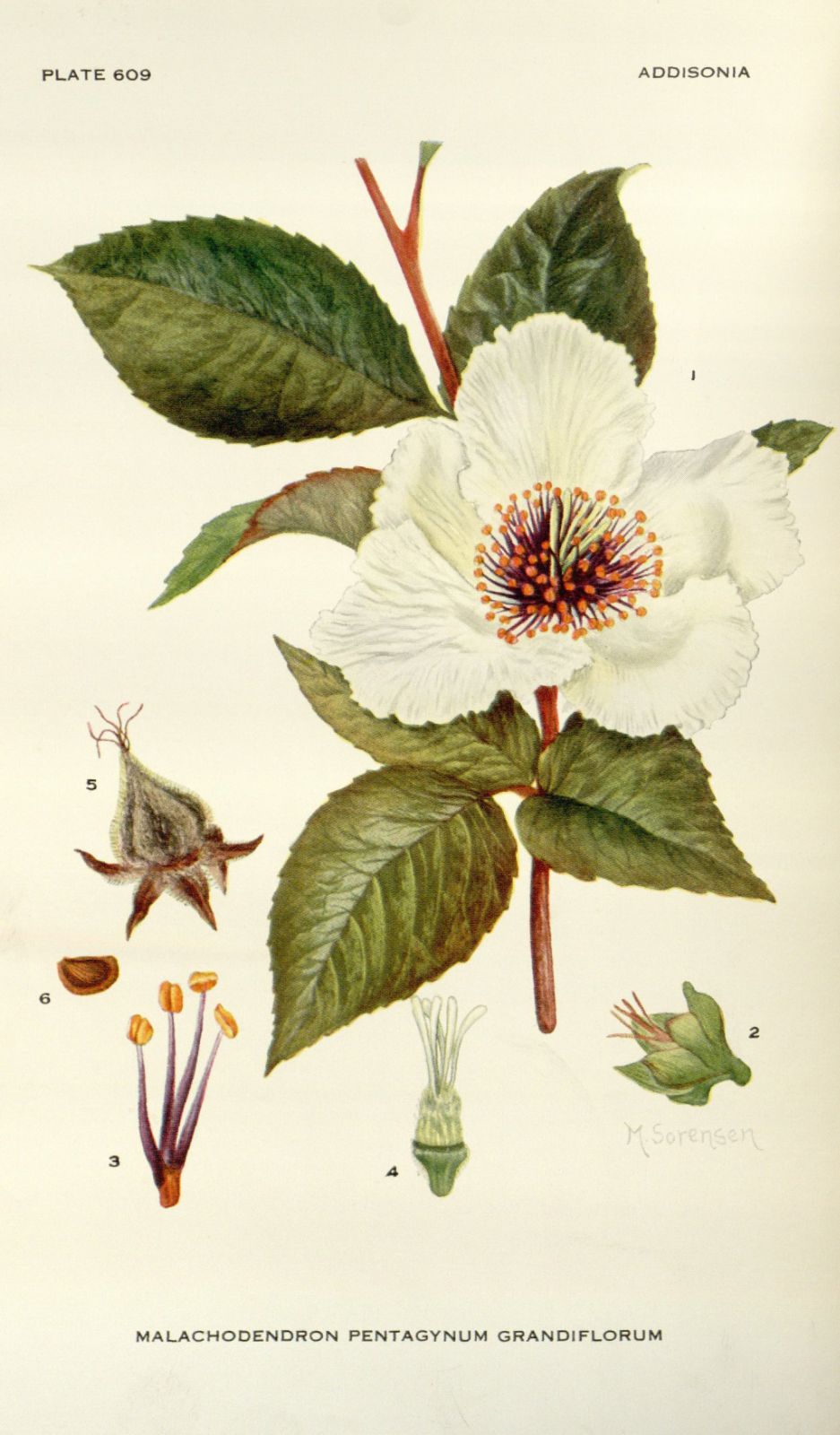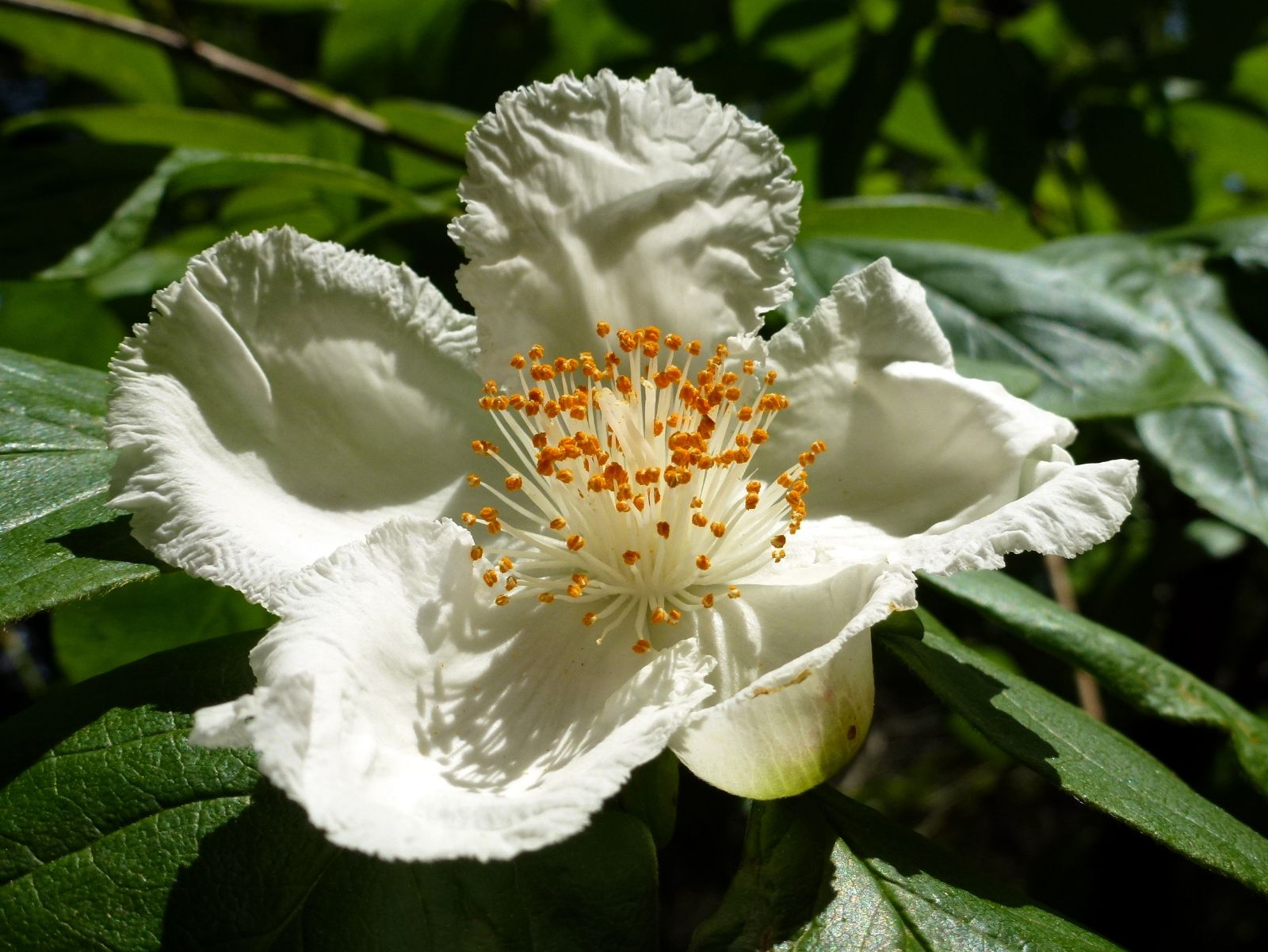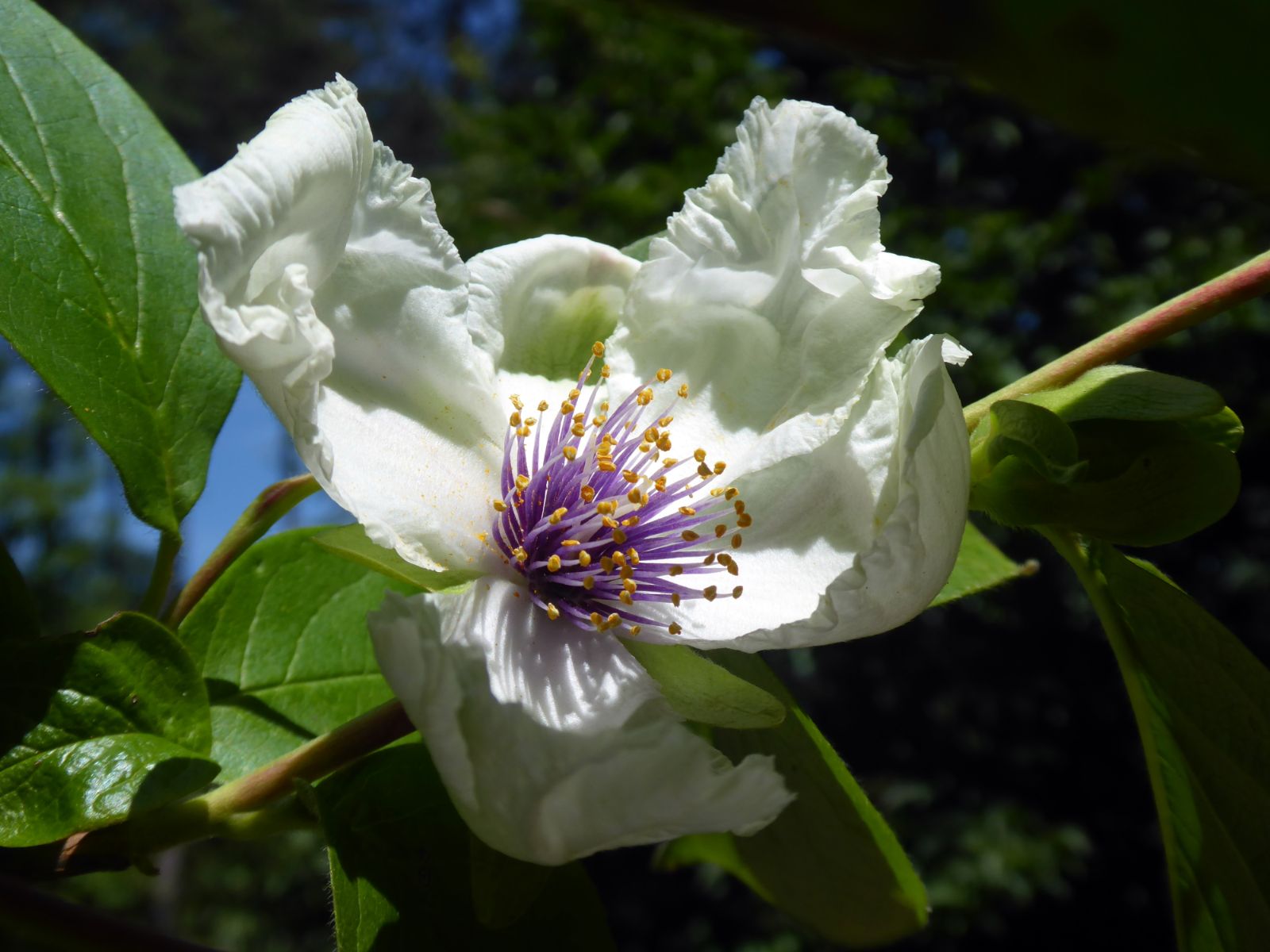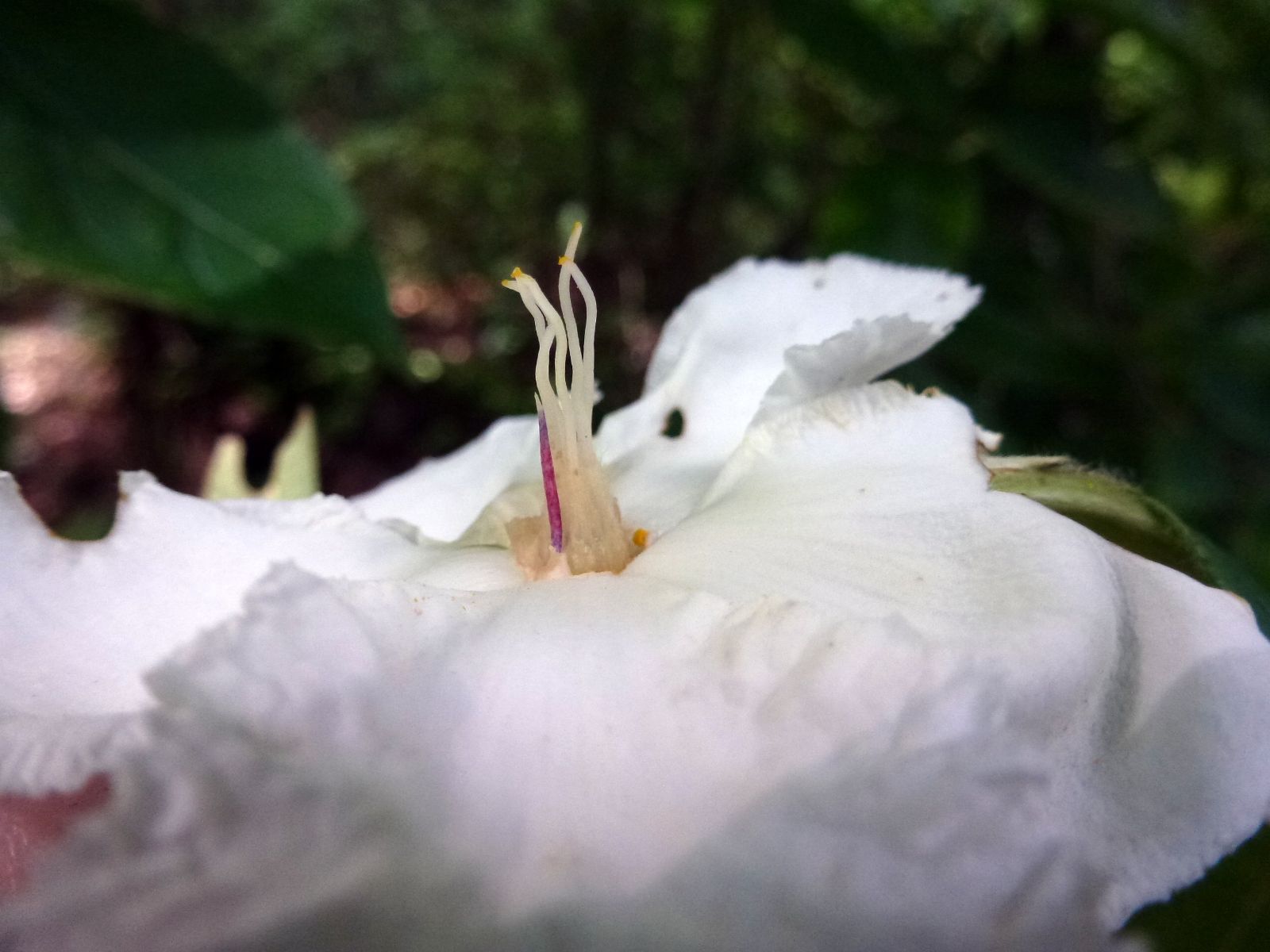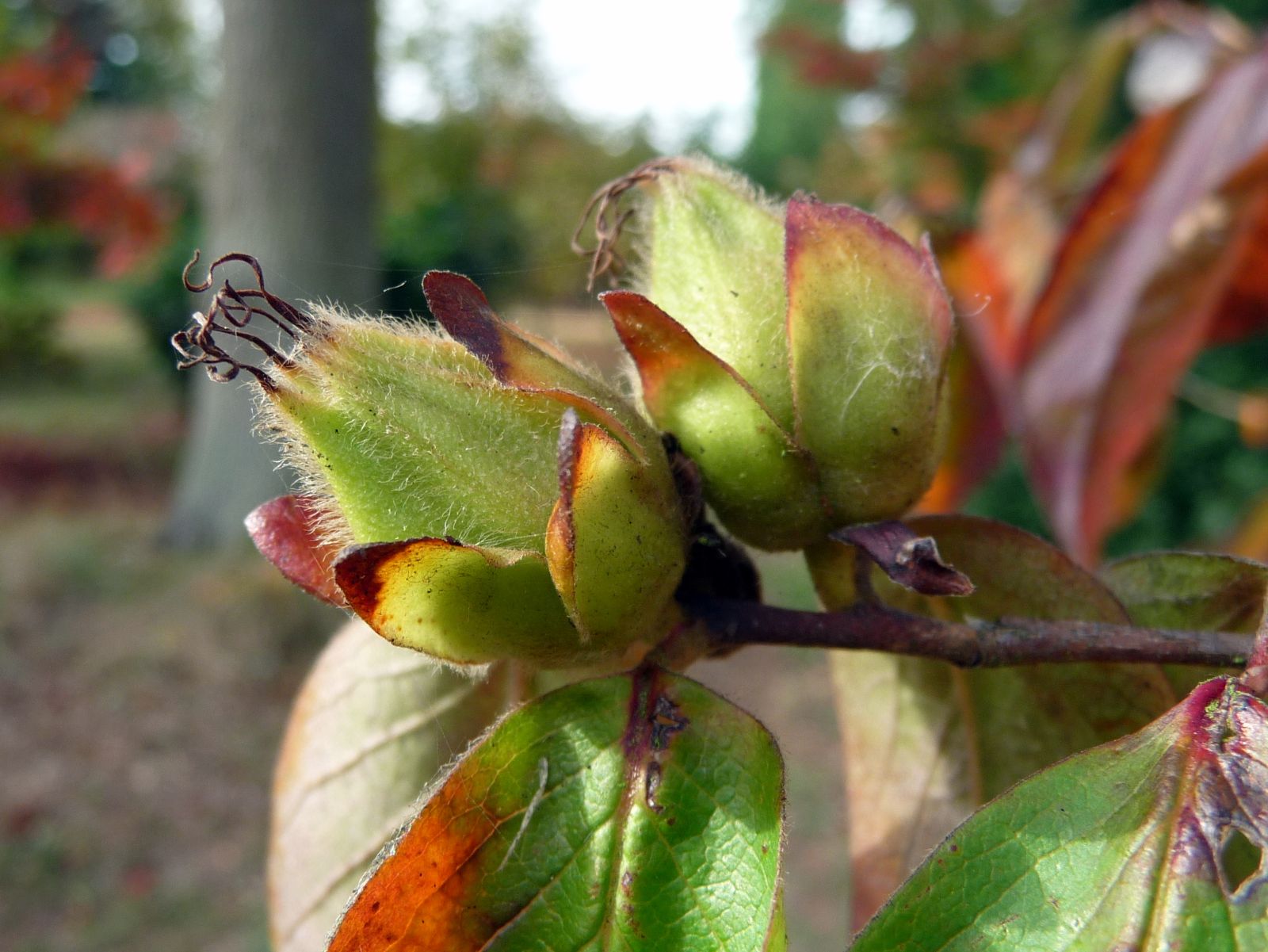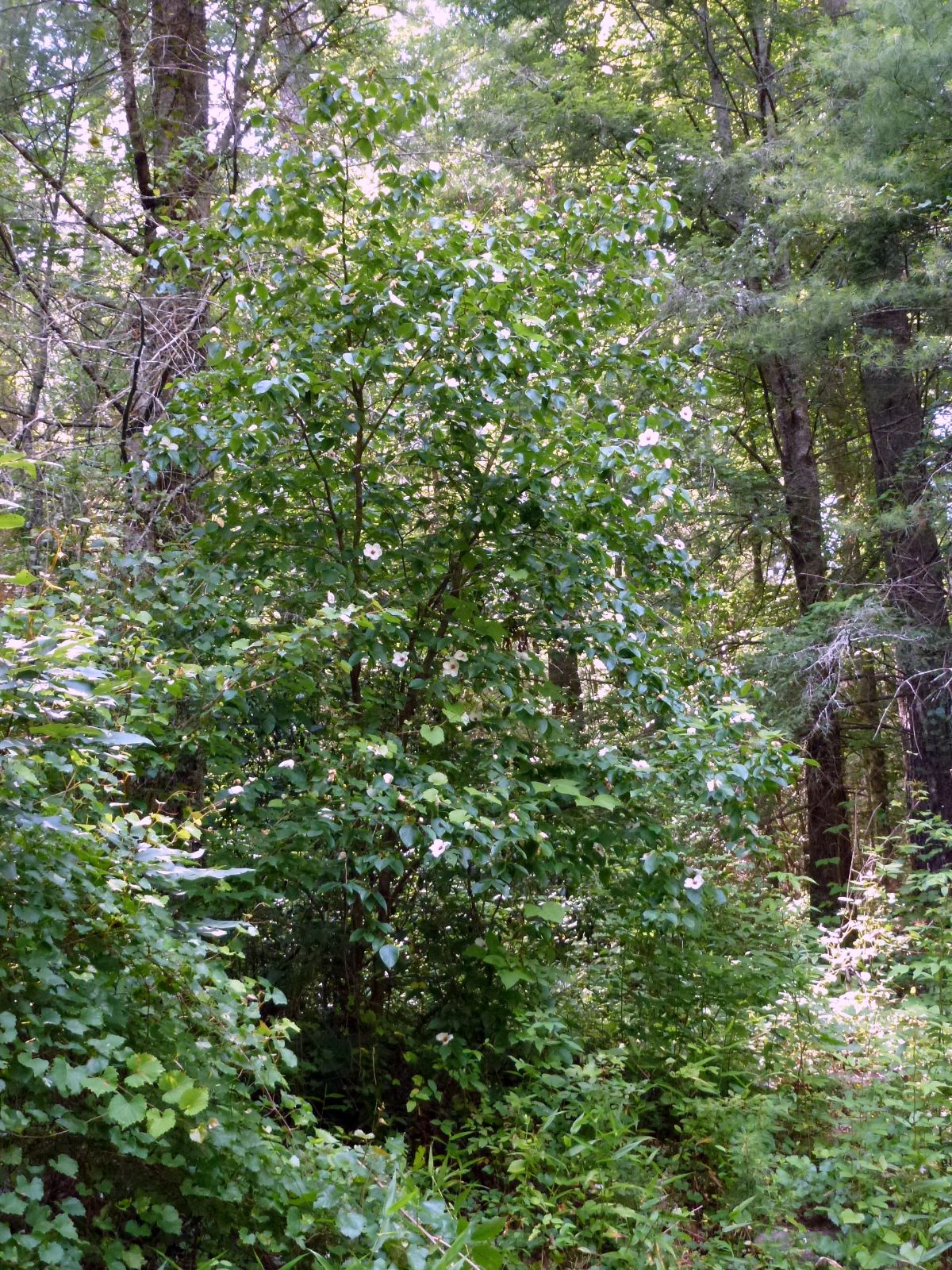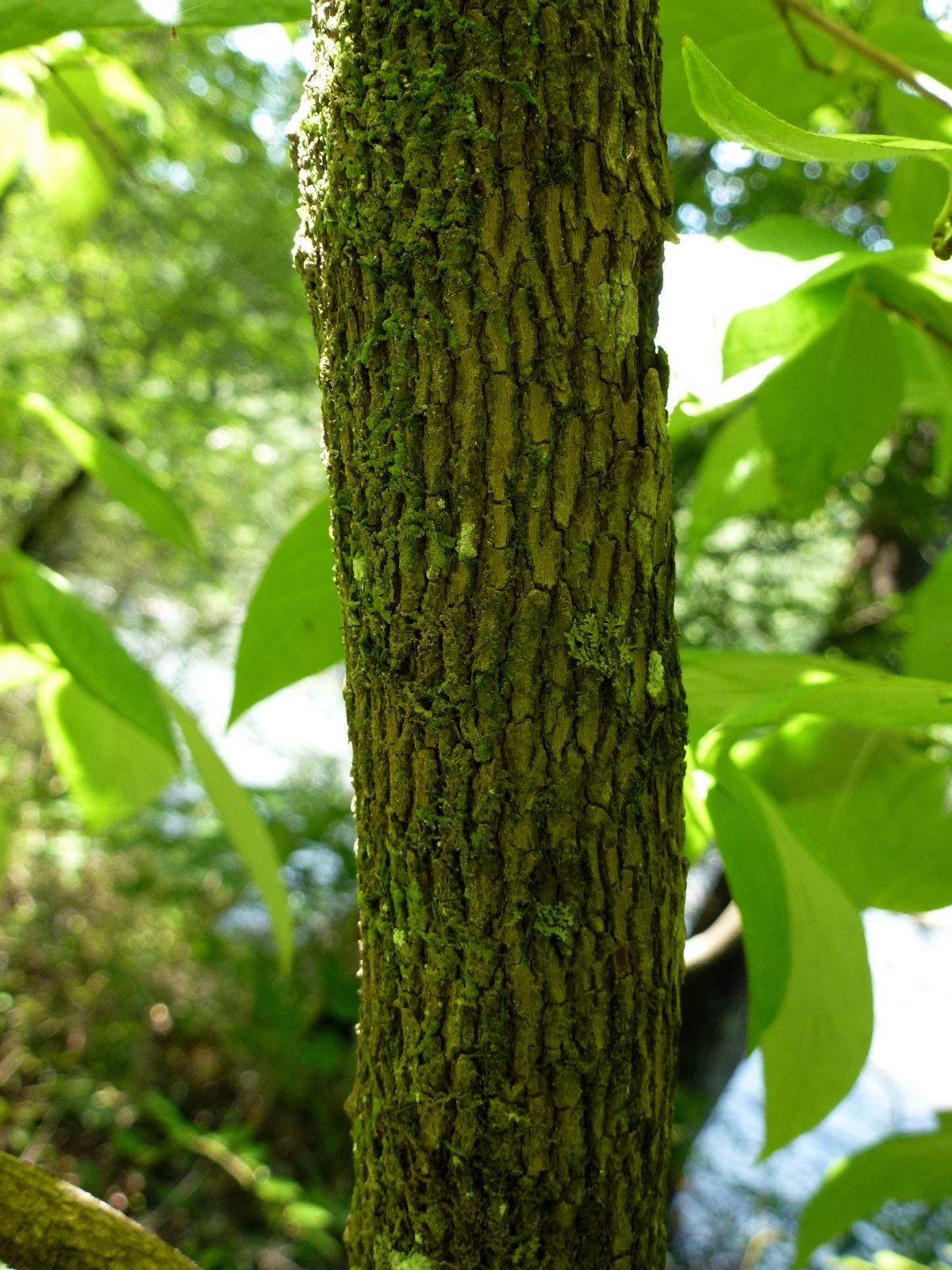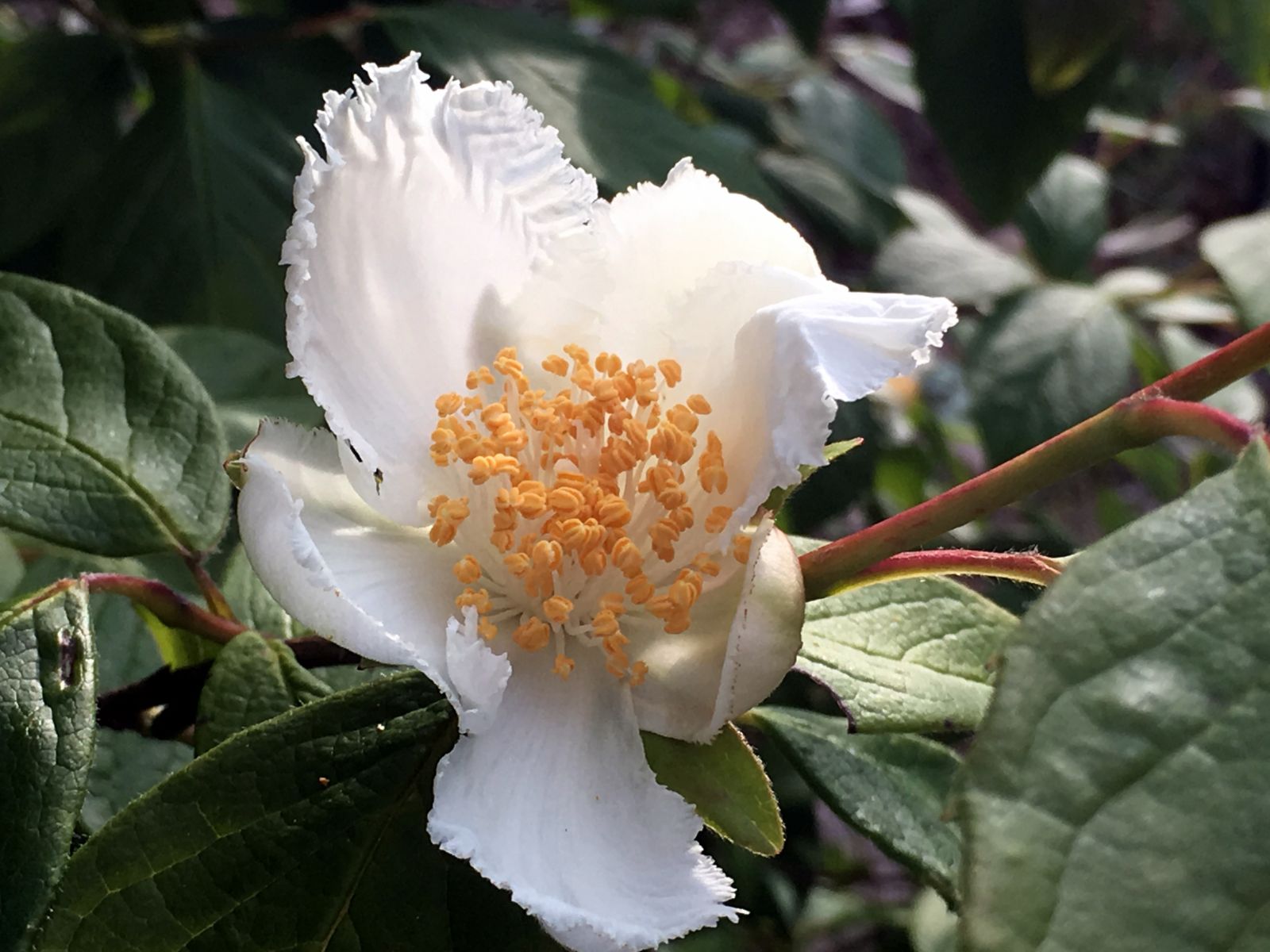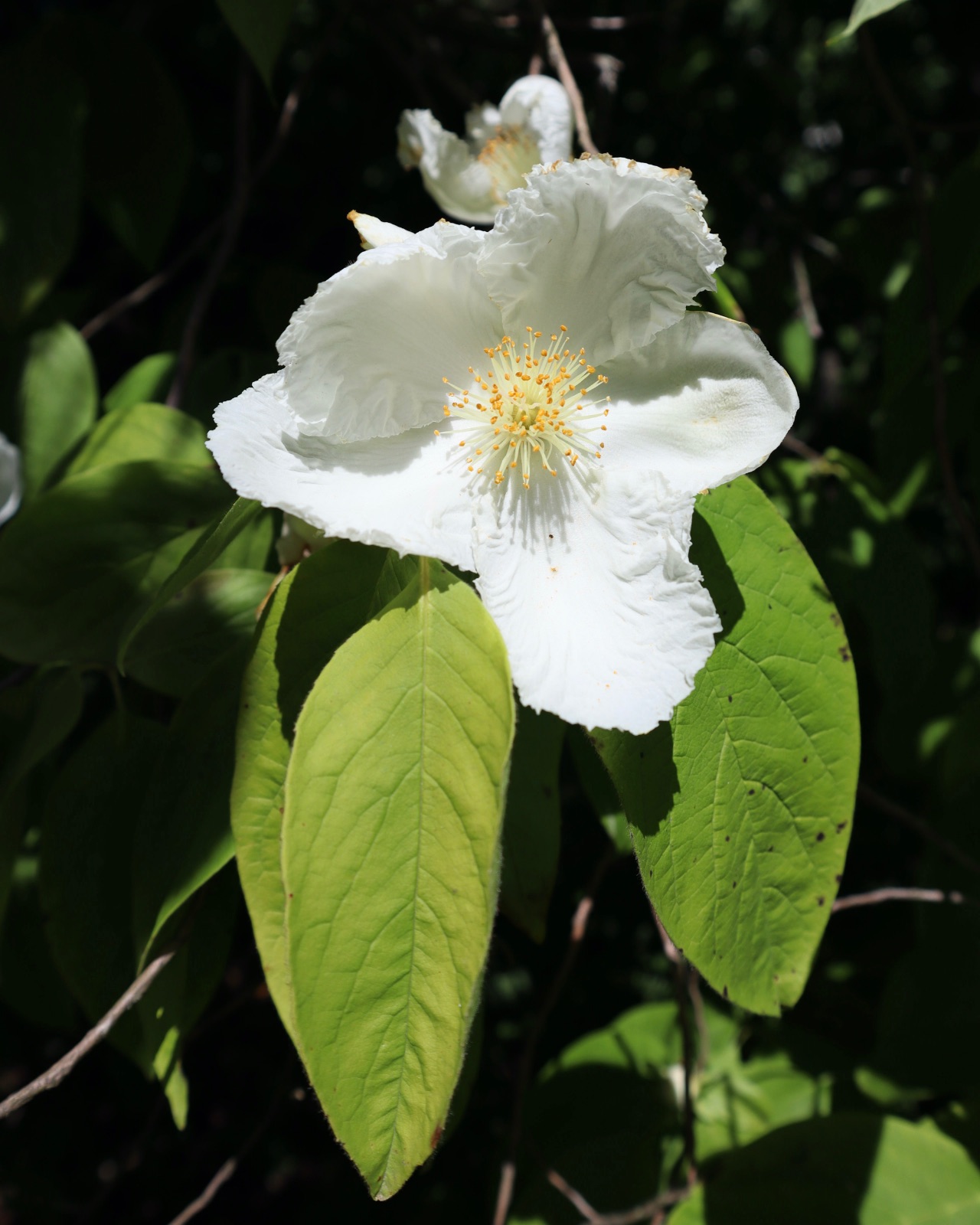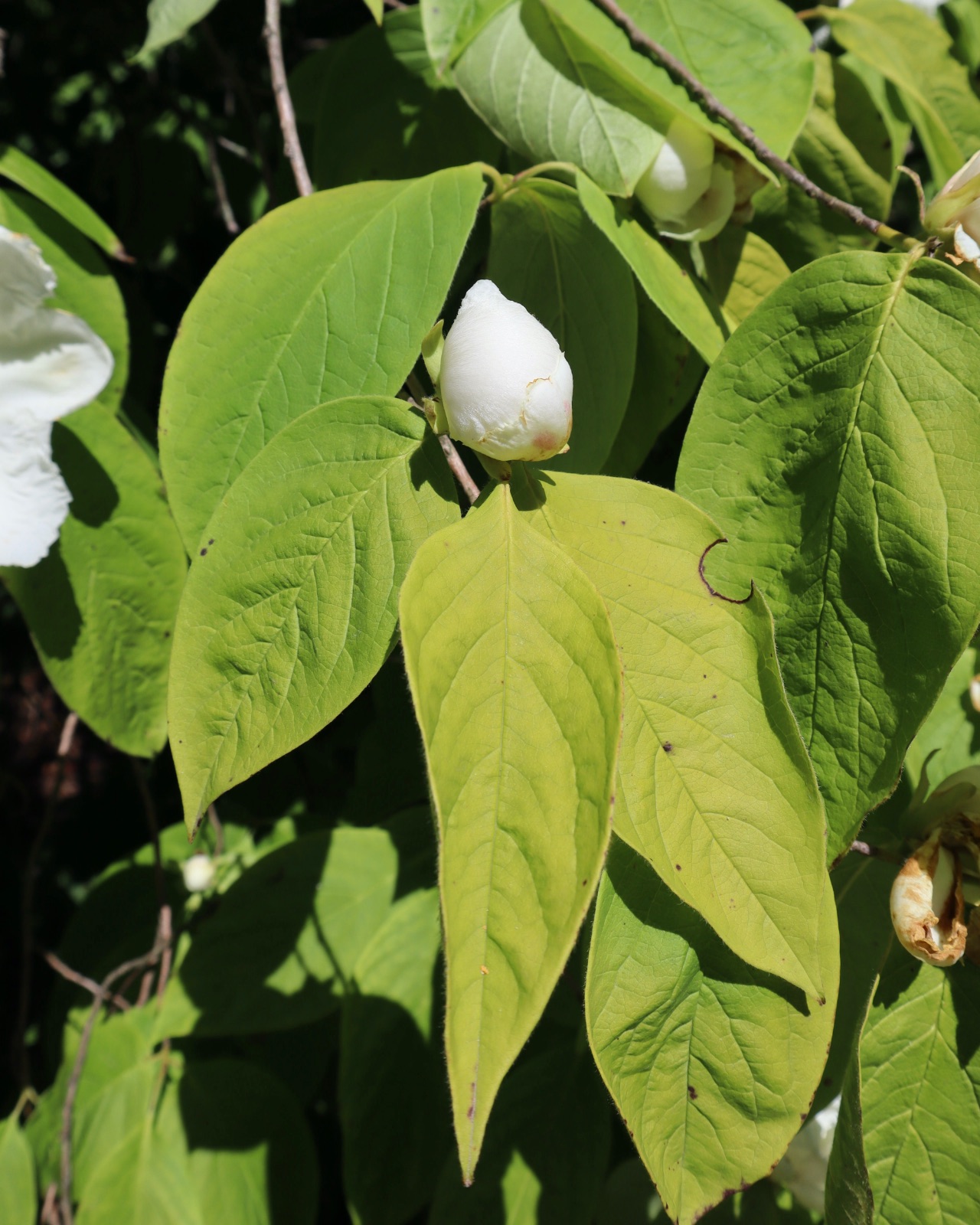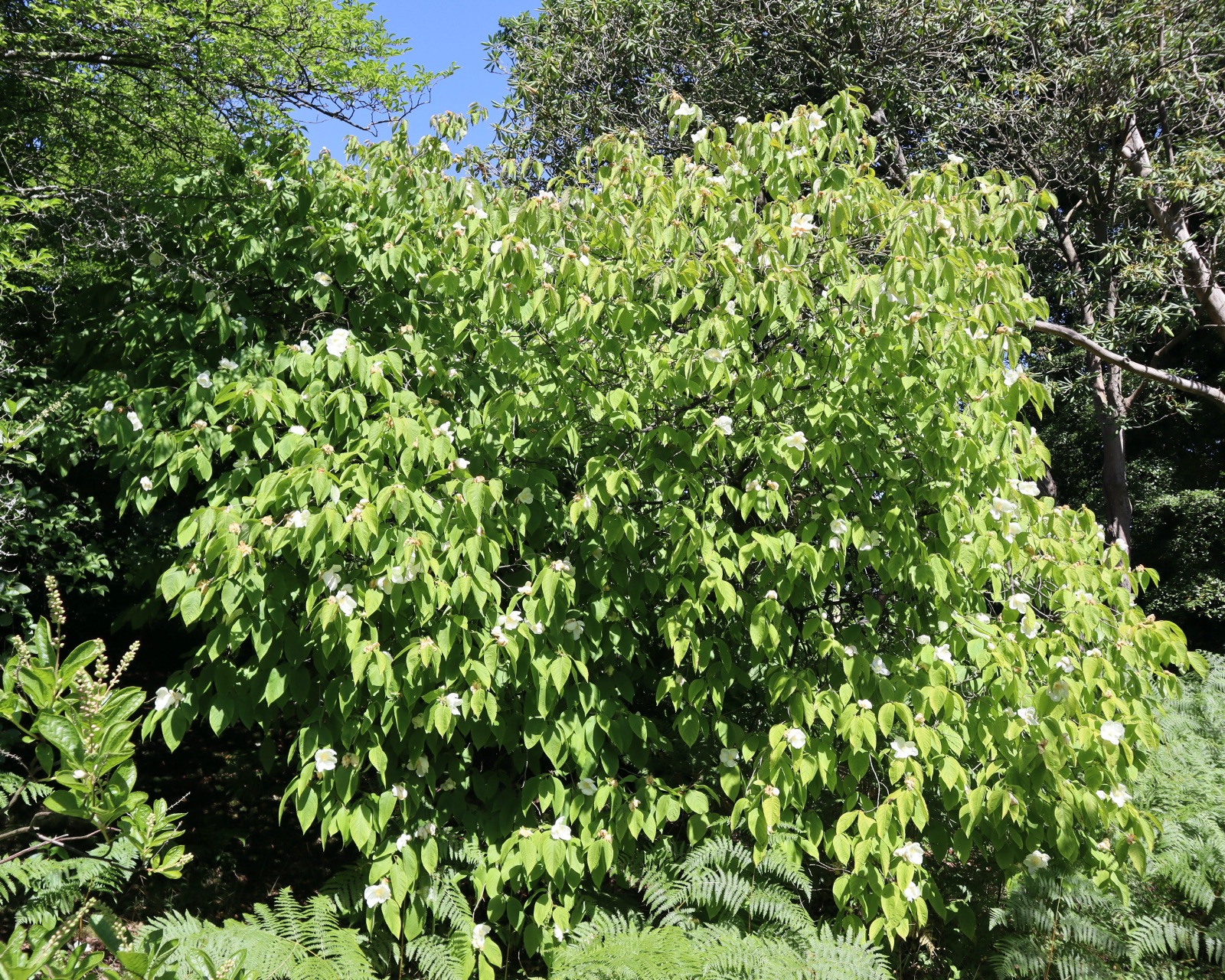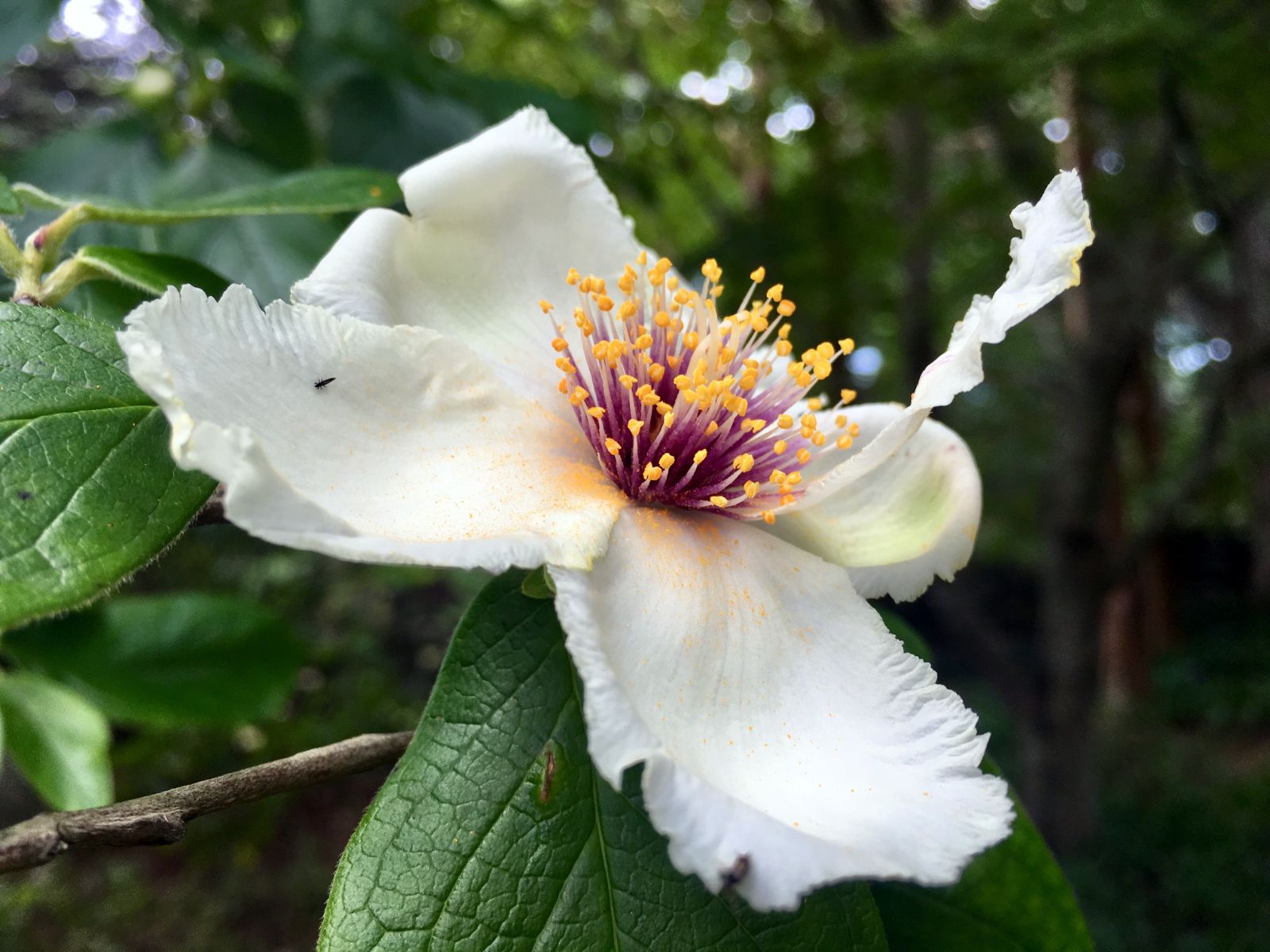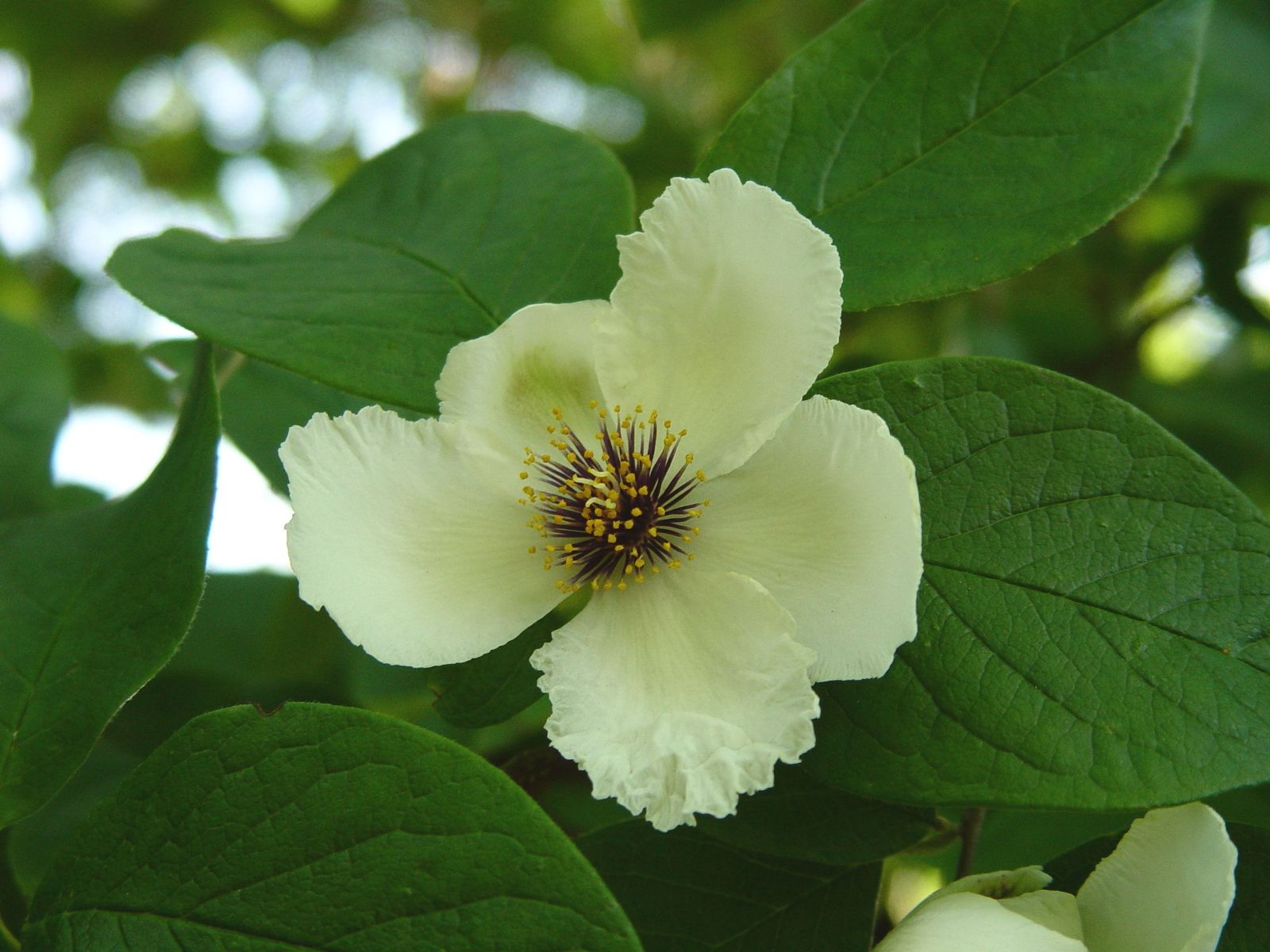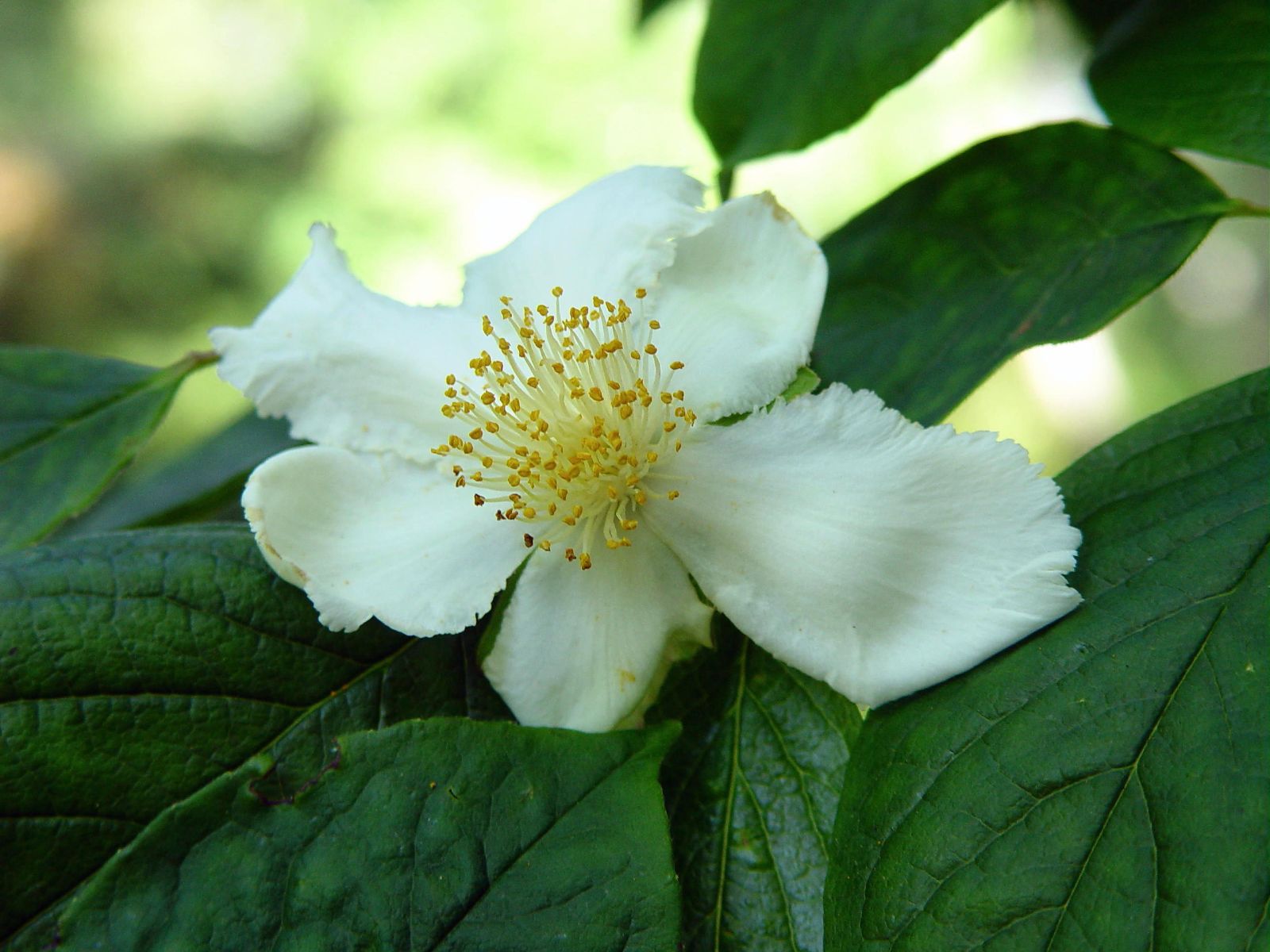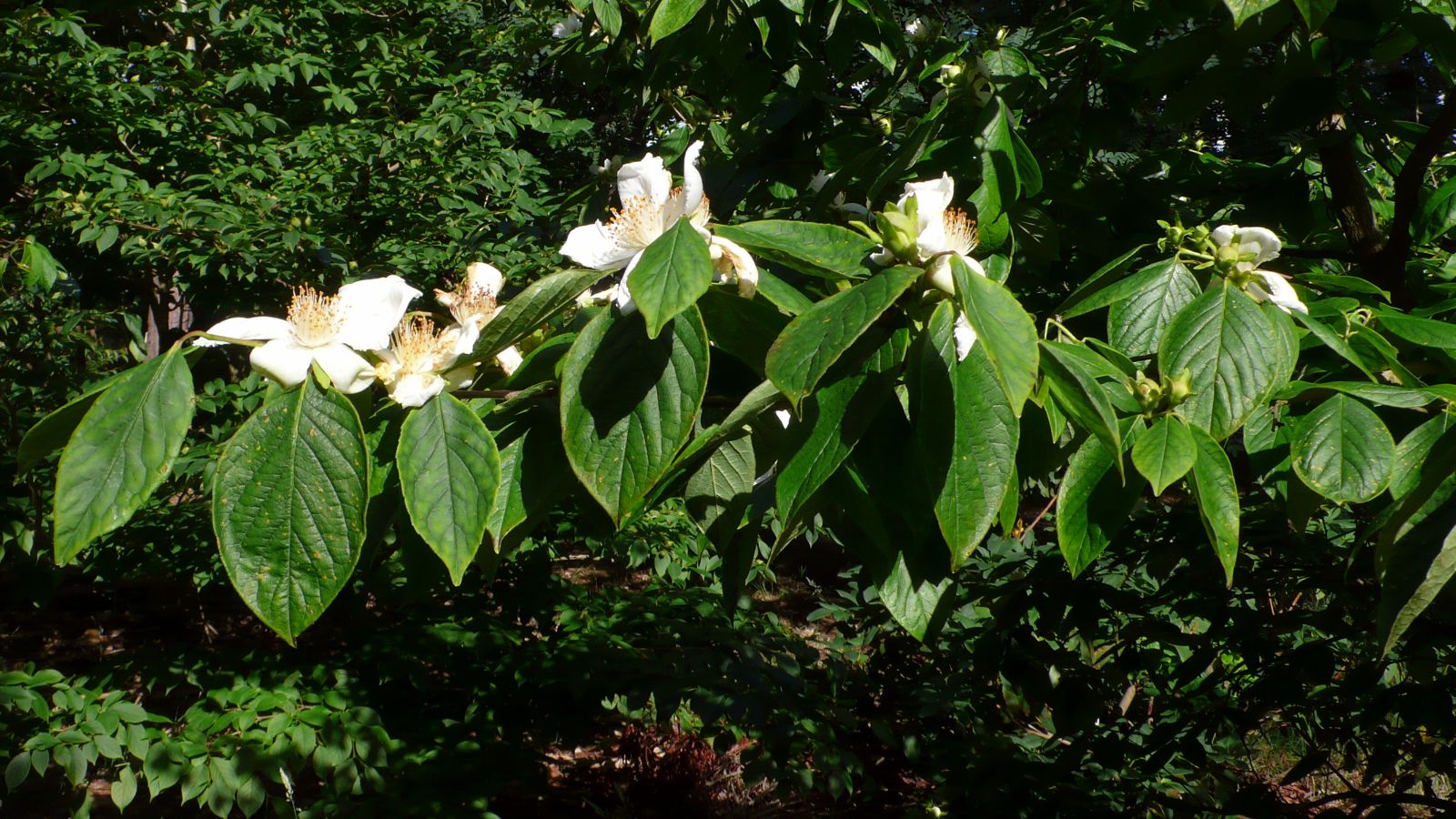Stewartia ovata
Sponsor
Kindly sponsored by a member of the International Dendrology Society.
Credits
John Grimshaw (2016)
Recommended citation
Grimshaw, J. (2016), 'Stewartia ovata' from the website Trees and Shrubs Online (treesandshrubsonline.
Genus
Common Names
- Mountain Camellia
- Mountain Stewartia
Synonyms
- Malachodendron ovatum Cavanilles
- Malachodendron pentagynum (L'Héritier) Dumont de Courset
Infraspecifics
Small tree or large shrub to 6 m, often multi-stemmed, crown rounded. Bark longitudinally fissured, but not peeling, branches smooth, young twigs reddish-brown. Winter bud scales 1, enclosed by petiole wings, compressed, 2–5 mm, silvery-pubescent. Leaves (3–)8–12(–15) × (2–)4–7(–8.5) cm, ovate to broadly elliptic, sparsely pubescent below, 5–7 pairs of veins, margins ciliate, serrulate to erose, apex acute to acuminate, base broadly cuneate to rounded; petiole 2–15 mm, wing 1–2 mm wide. Flowers solitary; pedicel 0.3–0.4(–0.7) cm × 1 mm; bracteole solitary, 10–15 mm; sepals lanceolate, (11–)14–18 × 6–9 mm; corolla creamy white, (5–)6–10 cm across, occasionally with up to 8 lobes, margins erose, pubescent externally; stamens 100–125(–150); filaments 12–18(–20) mm white, yellow, rose, or purple, anthers yellow; styles 5; stigmas unlobed. Capsules ovoid, acute, 1.5–2.2 × 1.4–1.6 cmpubescent. Seeds reddish-brown, winged, planoconvex, (7–)8–10 × 5–7 mm, dull, wing 0.1–1 mm wide. Flowering (May–)Jun–Jul(–Oct) (USA). (Prince 2009; Elias 1980).
Distribution United States Alabama, Georgia, Kentucky, Mississippi, North Carolina, South Carolina, Tennessee, Virginia
Habitat Shaded, moist valleys, (100–)200–1100 m asl.
USDA Hardiness Zone 5-8
RHS Hardiness Rating H5
Conservation status Least concern (LC)
Taxonomic note Bean’s var. grandiflora (Bean) Weatherby, distinguished by its purple filaments (see Bean) is no longer recognised by American botanists, though Dirr (2009) suggest that the name Grandiflora Group might be useful to refer to plants with purple filaments. It may be part of the natural variation of the species (Wood 1959) or the result of introgression with S. malacodendron (Prince 2009). It is clearly a horticulturally desirable plant.
Bean records that Stewartia ovata was introduced to England in 1795 and had been successful in southern gardens, but that by the early twentieth century it had become very scarce. This scarcity persists, with no specimens being recorded in Owen Johnson’s (2011) comprehensive survey of British champions. In Belgium, it grows at Arboretum Wespelaar and Herkenrode, but it is disappointing there, dropping its flowers very promptly, a problem attributed to the comparatively cool maritime climate of the area (Hsu, Boland & Camelbeke 2008). In the United States, however, it is a good doer, and regarded as exceptionally hardy, with trees thriving in Michigan (USDA Hardiness Zone 5). It thrives throughout the eastern states, including in Georgia (Dirr 2009).
The flowers of S. ovata are magnificent and ‘beautifully ruffled’, opening over an extended period (Hsu, Boland & Camelbeke 2008) and clearly earn it a place in suitable gardens. The bark is furrowed and slightly corky and does not excite, and the autumn colour can be disappointing (Dirr 2009) though it is potentially orange to scarlet.
'Inner Light'
A seedling found at Polly Hill Arboretum by Tim Boland and grown in his home garden. It has purple new growth and large ‘frothy’ flowers (T. Boland pers. comm. 2016).
'Nymans'
A selected clone from Nymans, West Sussex, UK with larger flowers, 7–10 cm in diameter, with yellow anthers (Armitage, Edwards & Lancaster 2014).
'Red Rose'
Selected by Polly Hill from seedlings grown from seed obtained from Colonial Williamsburg, VA, in 1967, for its red filaments (Polly Hill Arboretum).
'Royal Purple'
Selected by Polly Hill from seedlings grown from seed obtained from Colonial Williamsburg, VA, in 1967, for its purple filaments (Polly Hill Arboretum).
'White Satin'
Selected by Polly Hill from seedlings grown from seed obtained from Colonial Williamsburg, VA, in 1967, for its white filaments (Polly Hill Arboretum).


